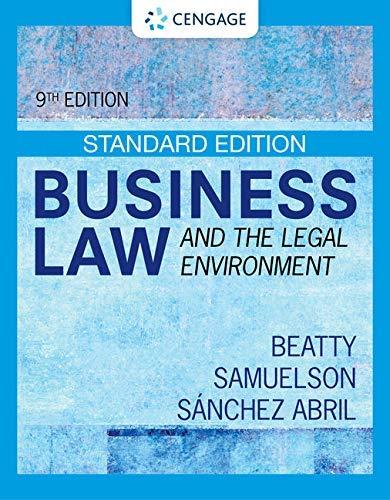Question
1) Why do firms advertise? Even when goods are interchangeable? 2) Is economics value free? Name 2 value decisions might economics make about what is
1) Why do firms advertise? Even when goods are interchangeable?
2) Is economics value free? Name 2 value decisions might economics make about what is
important? e.g. XX is preferred to XX
3) Is economics goal free? Name 3 goals might economics seek to achieve?
4) What is the fundamental problem of economics as a discipline?
a. The allocation of resources among competing wants because there are unlimited wants
limited resources
5) What characterizes a laissez faire approach to economics? (select all that apply)
6) Outline the difference between positive and normative questions?13
7) Which of the following is an example of a normative question?
a. What is the nation's rate of economic growth?
b. What is the nation's rate of inflation?
c. What is the nation's rate of unemployment?
d. What is the nation's level of GDP?
e. Is the goal of sustainability of greater importance than the goal of economic
growth as we move into the 21st century?
8) Define output and income.
9) Which of the following best describes the precautionary principle?
a. It is incumbent on society to prove if an activity is unsafe to natural systems or
human health.
b. We should err on the side of caution when dealing with natural systems or
human health.
c. The benefits of economic production and growth outweigh the risks of damage
to natural systems or human health.
d. Business should not have to prove a product to be safe before being released on
the market; rather a product must be proven unsafe before it is banned and
pulled from the market.
e. We should take precautions before engaging in risky investment.
10) Define unemployment and how it is expressed in most countries.
Percentage of total workforce who are unemployed and are actively seeking a paid job.
Unemployment rate (# of unemployed / # in labor force) = %
Unemployment rate is one of the most closely watched statistics because a rising rate is seen as a
sign of weakening economy that may call for cut in interest rate. A falling rate, similarly, indicates a
growing economy which is usually accompanied by higher inflation rate and may call for increase
in interest rates.
Step by Step Solution
There are 3 Steps involved in it
Step: 1

Get Instant Access to Expert-Tailored Solutions
See step-by-step solutions with expert insights and AI powered tools for academic success
Step: 2

Step: 3

Ace Your Homework with AI
Get the answers you need in no time with our AI-driven, step-by-step assistance
Get Started


